

plenty of countermarked coins are found in Judaea, learn more about them below ....
 Museum of Countermarks on Roman Coins
Museum of Countermarks on Roman Coins
10.2 Legionary Countermarks - The East (Judaea-Syria):
"LVIF", "Hadrian's Head", "VI",
"X", "XF", "LXF", "LXF
with wild boar and dolphin", "Galley", "XII", "Thunderbolt", "LXVA",
"XVA",
"Palmbranch"


plenty of countermarked coins are found in
Judaea, learn
more about them below ....
Coins marked with rbc are from
the Richard
Baker Collection
"LVIF"
of the
Legio
VI Ferrata
from Judaea, usually combined with a small rectangular
countermark
with a male head. The LVIF countermark may be connected to the
aftermath
of the Jewish War, the uprisings late in Trajans reign or, even the Bar
Kochba uprisings of 132-135A.D
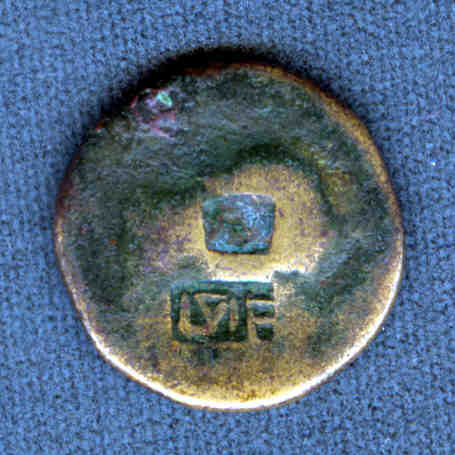 rbc, the
coin is 22 mm, with a weight of 5.5g.
rbc, the
coin is 22 mm, with a weight of 5.5g.

 more
examples
more
examples
"Hadrian's
Head" countermarks,
sometimes associated with legio XII.
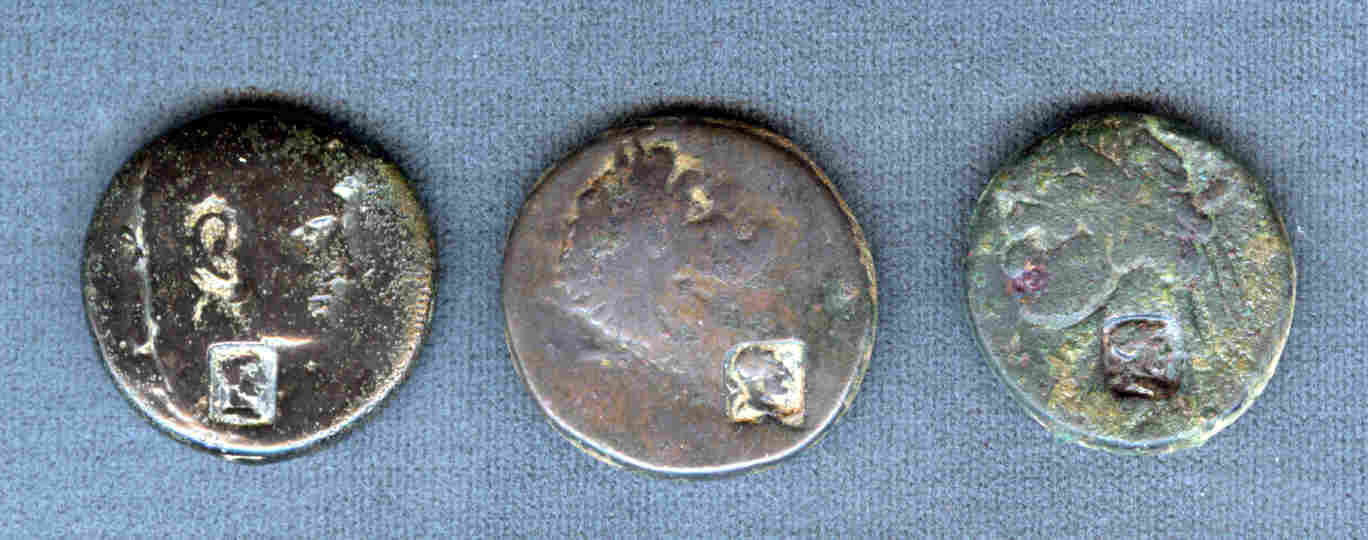
 rbc
rbc
Three coins of Antioch with "Hadrian Head"
countermarks.
The countermarks show a laureated, bearded head in a rectangle, to
Right.
The first host coin
is probably Claudius, the other
two are of Domitian.
Their statistics, left to right, as in photo. #1. 25 mm, 15.1g. #2. 26
by 27 mm, 14.7g. #3. 23 by 25 mm, 12.6g.
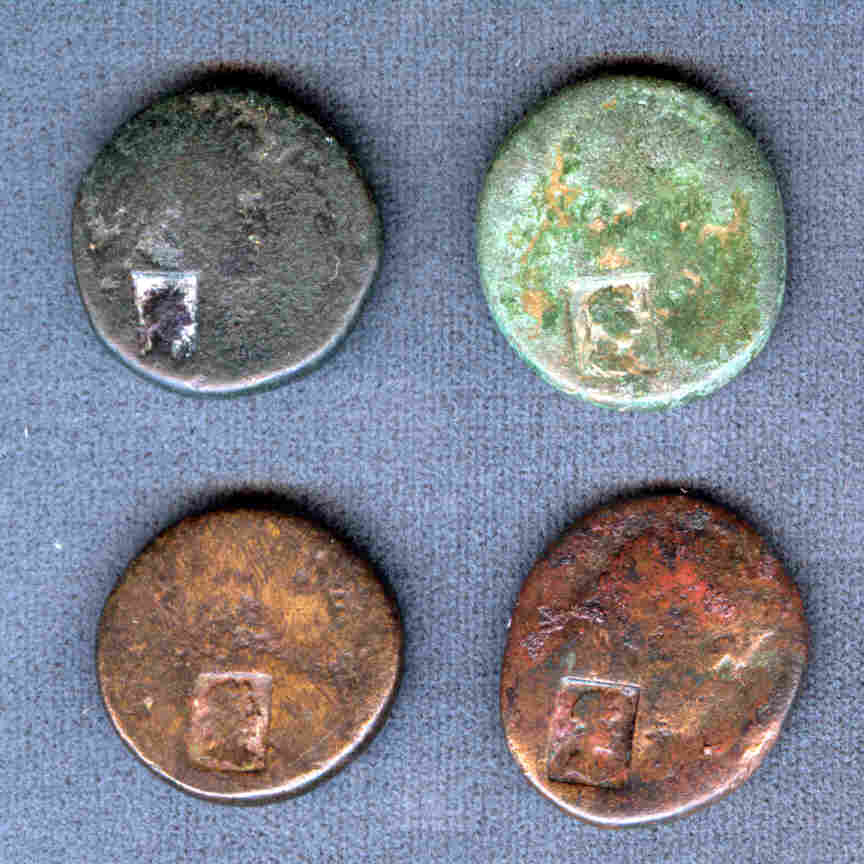
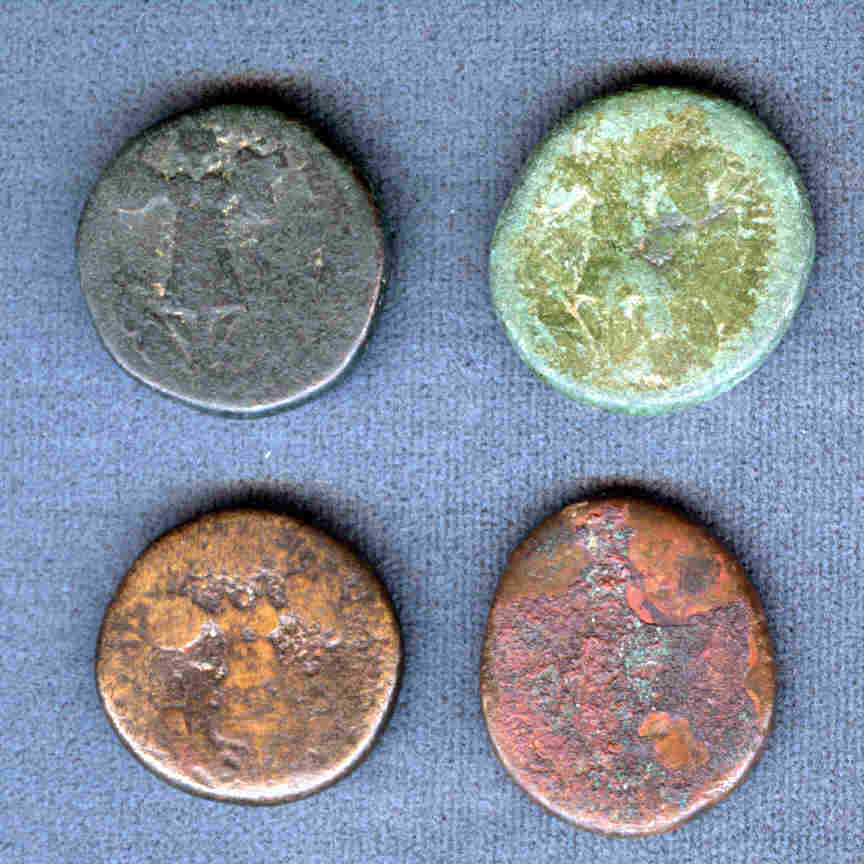 rbc
rbc
The next grouping is 4 coins of Titus from
Samaria, Judaea
Capta (in Greek) around trophy of Armour on reverse. All 4
countermarks
appear to have the laureated, bearded heads of Hadrian, to right in
rectangle.
Going right to left, top row first, here are the statistics: #1. 22.5
mm
with weight of 10.1g. #2. 22 by 24 mm, with weigt of
10.6g.
#3. 22 mm, with a weight of 9.2g. and #4. 21 by 24 mm, with a weight of
8.5g.
"VI"
for possibly Legio
VI Ferrata on a provincial coin of Caligula

Countermarks of the Legio X Fretensis
Of the Legio X Fretensis there are multiple different countermarks (e.g. LXF, XFR, XF, X, LXF above boar, galley, head of Emperor), sometimes on the same coin. This legion was based in Jerusalem. The LEGIO X FRETENSIS acquired its nick name, Fretensis, from the famous naval battle of 36 B.C.where the Tenth Legion under the command of Marcus Agrippa destroyed the forces of Sextus Pompey off the coast of Sicily. The nick name is taken from "Fretum Siculum", which loosely translates to the Straits of Sicily, which were located off the Cape of Naulocus, where the naval engagement occured. The galley and the dolphin in some of the countermarks of this legion refer to its Naval victories.
"XF"



 rbc
rbc
"Judaea Capta coin of Titus from Samaria. The
countermark
is a large XF struck within a square. 22.5 mm by 23.5 mm, the
weight
is 10.4g.
"XFR"on
a coin of young
Marcus Aurelius from Bythinia, This use of a Legio X Fretensis monogram
is the "Latest" use to date found on coins.
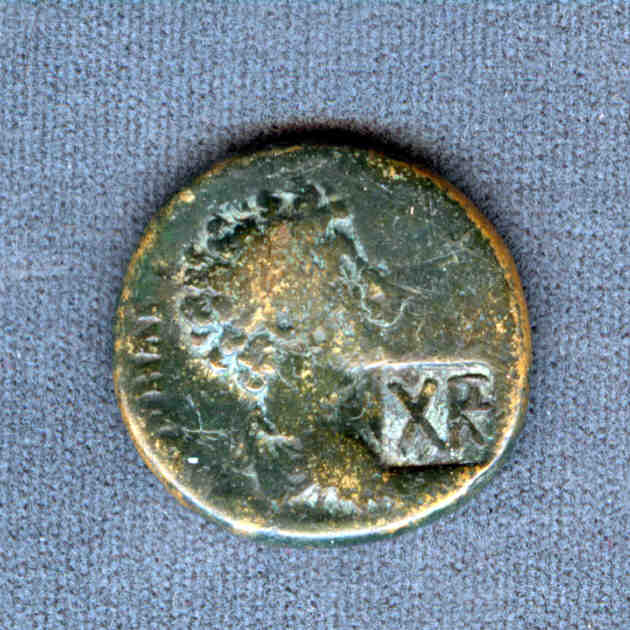
 rbc
rbc
26 mm, weight 11.0 g.
"LXF"
 on
a Domitian AE from Sebaste, struck 84/85 AD
on
a Domitian AE from Sebaste, struck 84/85 AD

 rbc
rbc
Another example, though in better condition, of a coin of Domitian
from Sebaste struck in84/85 A.D. (see 3 coins up). 25 by 27
mm, with
a weight of 9.5g.
 Countermark
"L.X.F
with wild boar
and dolphin
beneath"
Countermark
"L.X.F
with wild boar
and dolphin
beneath"
in varying combinations with "Galley
to the right", "Emperor's
Head",
"Standing
Neptune", and "LXF"

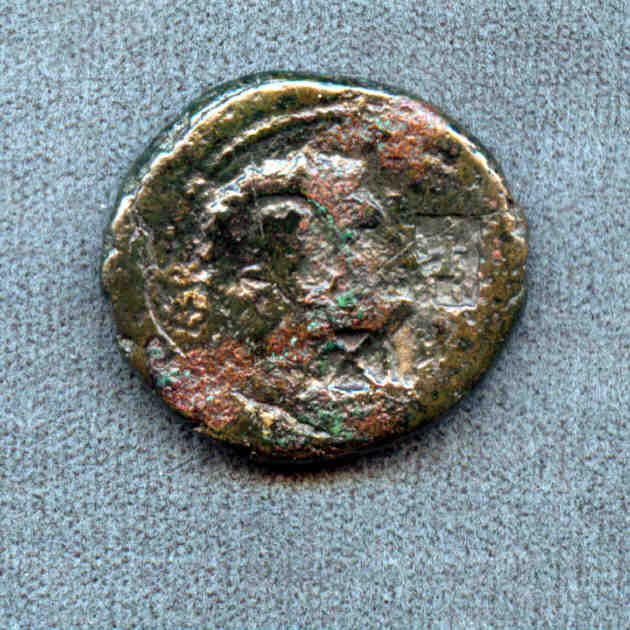 rbc
rbc
Reverse: Two countermarks on the reverse of this coin: #1. A
Wild Boar travelling to the right, with L.X.F. above, and a Dolphin
beneath
swimming to the right. #2. A Galley travelling to the right,
in a
rectangle. The letters L.X.F. stand for, Legio X Fretensis.
Obverse: The obverse shows three countermarks, two struck on the coins
Portrait: #1. Emperors head to right, within a circle.
#2.
LXF in rectangle. #3. A rectangle with a standing, facing
"Stick-Figure"
(Neptune? ), with staff(Trident?) in left hand and a Dolphin(?) in
right.
The coin is of Domitian, from Samaria. It is 24 by 27mm, with
a weight of 12.5g.
The Dolphin, Galley and stick-figure (Neptune?) allude to the famous
naval battle of 36 B.C. mentioned above.
 rbc
rbc rbc
rbc
Reverse: The countermark on this coins Reverse shows a Wild Boar
travelling
right, with the letters L.X.F above, and a Dolphin swimming to right,
beneath.
Obverse: On the obverse are two countermarks: #1. An Emperors head
to right, within an oval. #2. A rectangle with LXF within.
The coin is 22 by 24mm, with a weight of 12.4g.
 another example
another example


Another example with "emperor's head" in oval on the obverse, on the
reverse "boar/dolphin/LXF" and "galley" countermarks
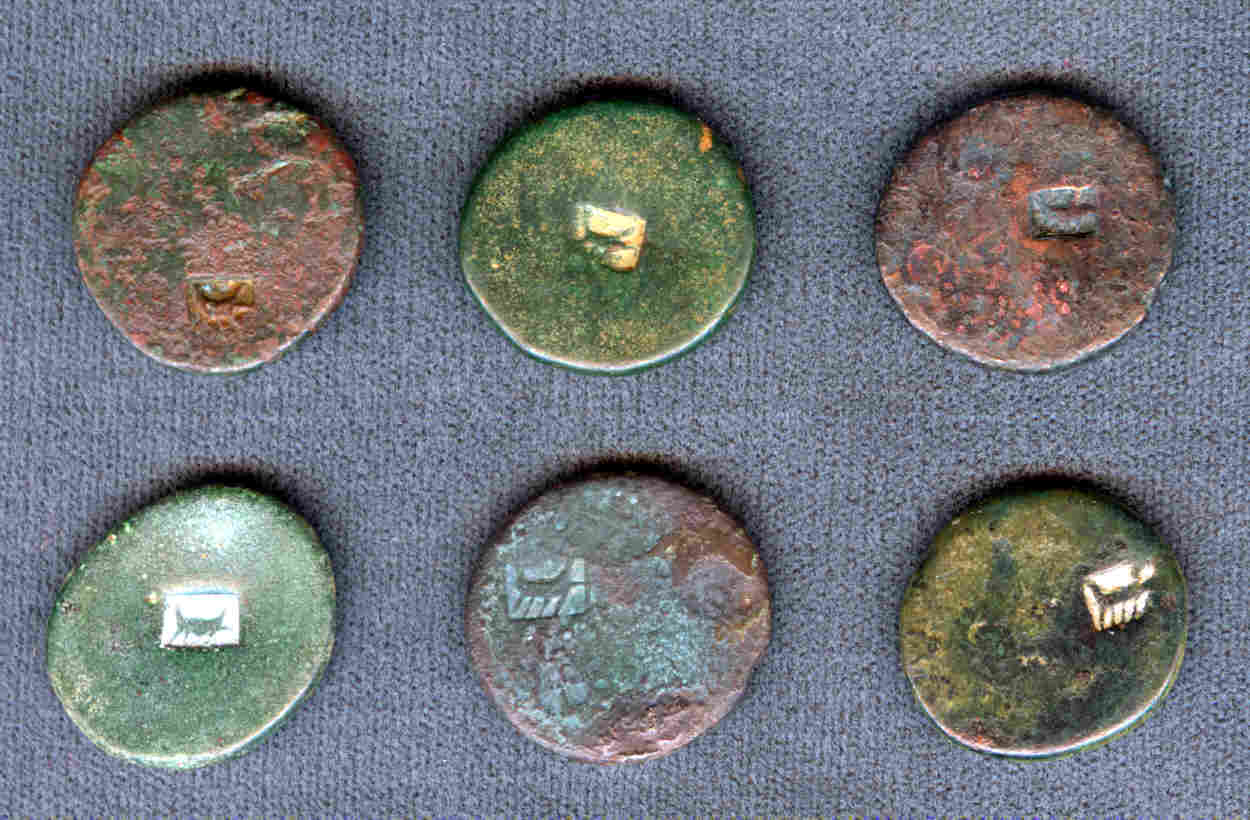 rbc
rbc
 rbc
rbc
Here are 6 examples of the "Galley'' countermark. From left to right,
top row first. #1. 21 mm, with a weight of 5.4g.
#2. 21 mm,
with a weight of
7.6g. #3. 22 mm, with a weight of 6.0g.
#4. 18 by
22 mm, with a weight of 5.9g. #5. 20.5 by 22 mm, with a
weight of
6.3g. #6. 19 by 21
mm, with a weight of 6.2g. The shape and style of the
"Galleys"
vary. Some have rounded bottoms and three oars, while others are more
elongated with four oars. All of them have on the reverse
side
a small rectangle with a male(?) head facing to right.
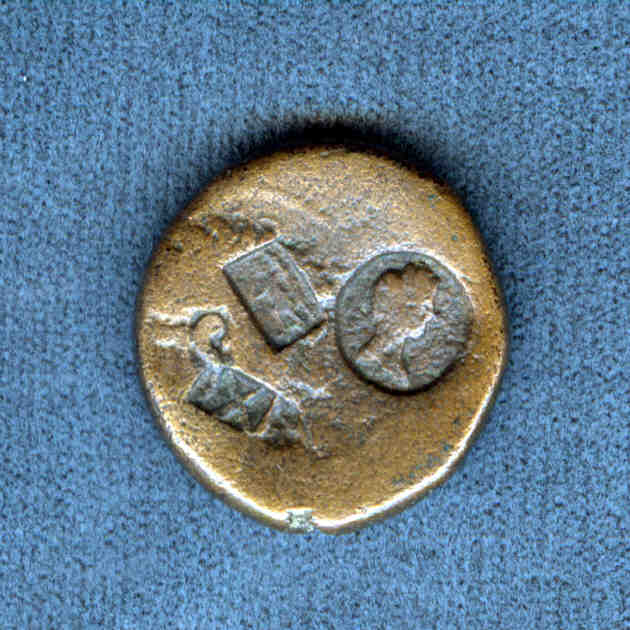
 rbc
rbc
Countermark #1. Laureated Imperial male head in circle, to
right.
#2. Rectangular stamp, within which is a standing facing "stick figure"
holding staff (Trident?? ) in left hand and a dolphin (???)
in right.
Possibly a figure meant to invoke Neptune, again alluding to the famous
naval battle. # 3 LXF.
The coin is 24 mm, with a weight of 11.9g.
Many Many more countertmarked coins for Legio X Fretensis...
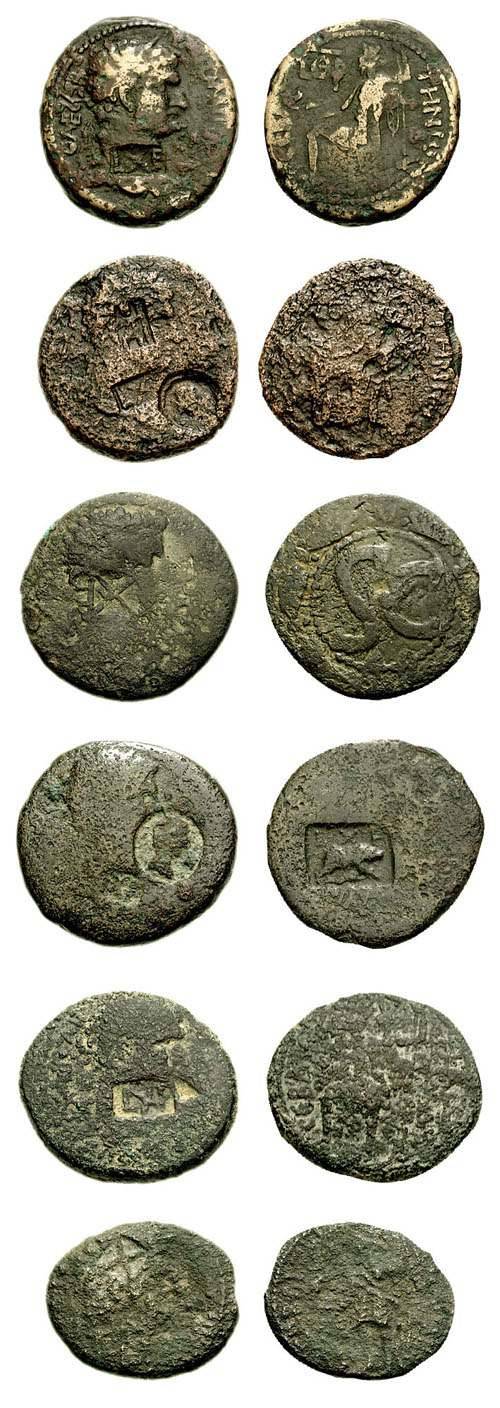
"XII" and "Fulminata Thunderbolt" , both countermarks of the Legio XII Fulminata
"XII"
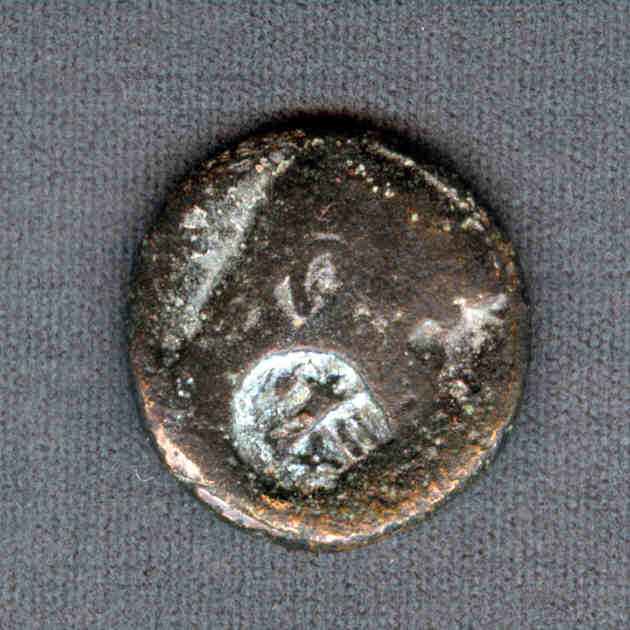
 rbc
rbc
Julio-Claudian Coin from Antioch, of either Augustus or Claudius. There
are two countermarks but, they are as follows: XII struck OVER a
Cornucopiae.
The coin is 26 mm, with a weight of 13.1g.
 in
this coin the two countermarks do not overlap
in
this coin the two countermarks do not overlap
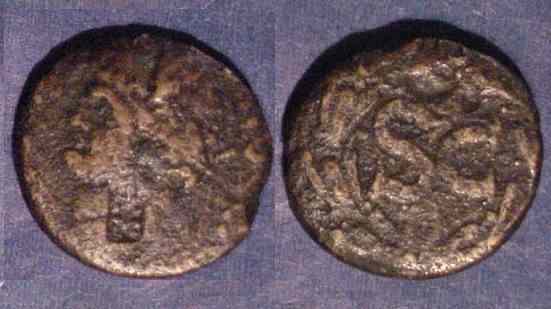 another XII countermark
another XII countermark
 XII
countermark on unknown host coin
XII
countermark on unknown host coin
"Fulminata", the thunderbolt,
symbol of Legio XII Fulminata

 rbc
rbc
coin with the Fulminata Thunderbolt (symbol of Legio XII Fulminata),
countermark. It is on a very worn coin of Trajan, possibly
from Syria
and showing a city tyche seated to right, on rock. Coin is 24 mm, with
a weight of 10.4g

"Fulminata" on a Commagene Dupondius of Vespasianus

"L
XVA" of Legio
XV Apollinaris on a provincial AE of Antoninus
Pius.

"XVA"
of Legio
XV Apollinaris on Eastern provincial AE of Lucius
Verus,
with a reverse showing Mt. Argaeus. Probably struck in
Cappadocia.
The coin is 20 mm, with a weight of 7.9g.

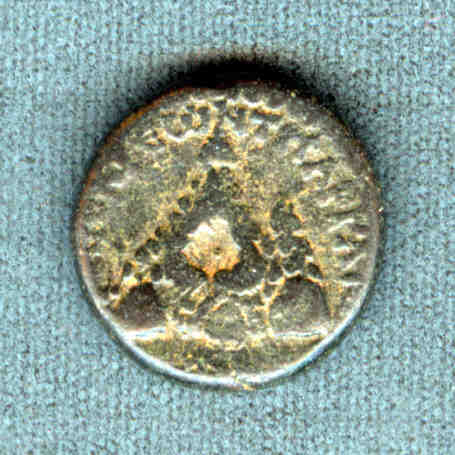 rbc
rbc
"Palmbranch"
countermark
on a prutah AE coin of the procurator Pontius Pilatus (yes, the one who
washed his hands so frequently), from Judea, and likely linked to a
roman
military unit based in Judea. 13 prutahs of pilatus with this
countermark
are known. For more info on this topic, we recommend www.pilatecoins.com
.
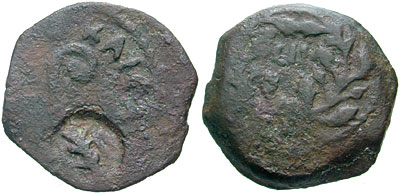
Related Sections of the Roman Numismatic Gallery: